India is a diverse country, having been ruled by different dynasties at the same time before being captured by foreign rulers, and then being colonized by the French, Portuguese and the British. This is precisely the reason why we find a beautiful amalgamation of cultures, religions, traditions and customs. This is also the reason why India is home to some of the finest examples of architectural brilliance. This nation is famous for its monuments, which range from native styles to elements from overseas. Be it a specimen of British architecture or that of Mughal framework, it is difficult to point out which monument excels the other but these are twenty-five of the most famous historical monuments of India. Take a look.
1. Taj Mahal, Agra
This burial chamber made of white marble is located in Agra, India. Declared a World Heritage Site by the UNESCO, the Taj Mahal is considered as one of the most romantic monuments in the world. It is not just its beauty that attracts millions of people from across the world, but also its history. During the Mughal Era, this construction of this mausoleum was commissioned by the then emperor, Shah Jahan, in memory of his beloved wife, Mumtaz Mahal.
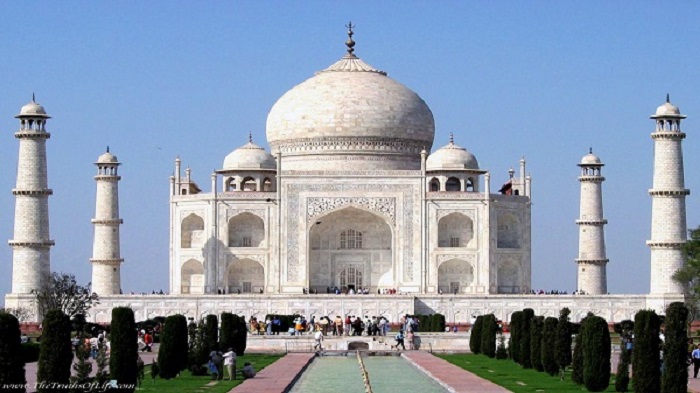
2. Agra Fort, Agra
Another World Heritage Site, the Agra Fort is a walled town, which was built by the Mughals in place of the Badalgarh Fort that stood there earlier. Other than being exceptionally aesthetic, the monument is famous because of the history behind it. It is rumored that Shah Jahan was imprisoned by his son, Aurangzeb, in a tower at the Agra Fort. It is supposed that Shah Jahan breathed his last in the same tower.
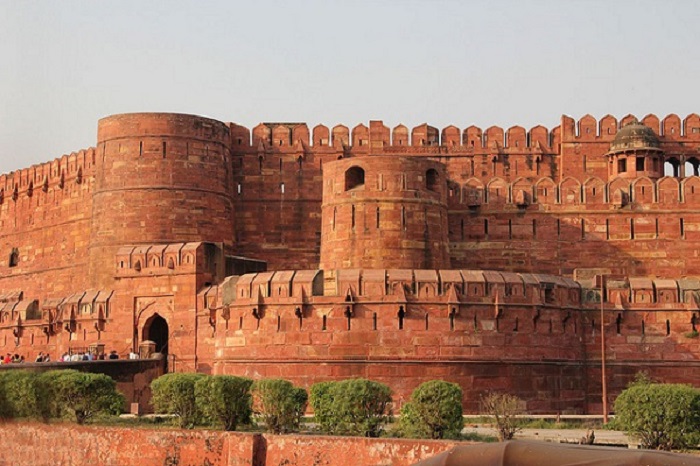
Image Source https://www.flickr.com/photos/laszlobolgar/5394492380
3. Basilica of Bom Jesus, Goa
Located in Goa, this Portuguese-built church is also a World Heritage Site. This church is in particular quite exquisite since it serves as a fine example of Baroque Italian-style architecture. Several tourists and locals alike, flock to the Basilica, not just to enjoy its beauty, but also to see the embalmed relics of 16th century Roman Catholic missionary, St. Francis Xavier.
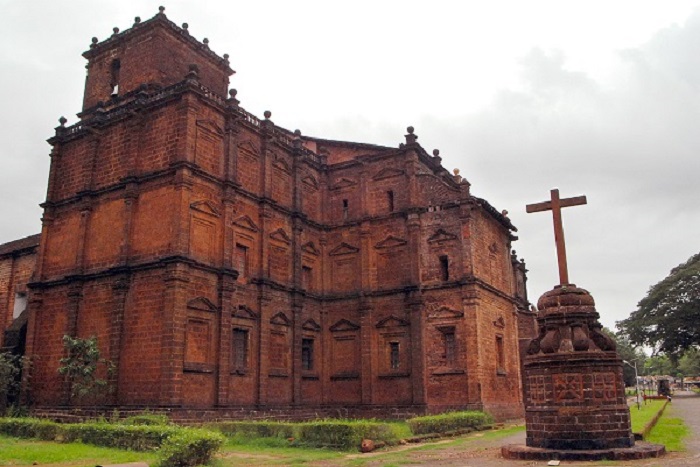
Image Source http://www.mapsofindia.com/my-india/travel/a-delightful-experience-basilica-of-bom-jesus-goa
4. Charminar, Hyderabad
This well-crafted monument, known as the Char Minar, in Hyderabad, Telangana, also serves as a mosque. While in Hyderabad, a visit to this intricate four-towered monument is a must. Legend has it that the famous Golconda Fort is linked to the Char Minar through an underground passage.
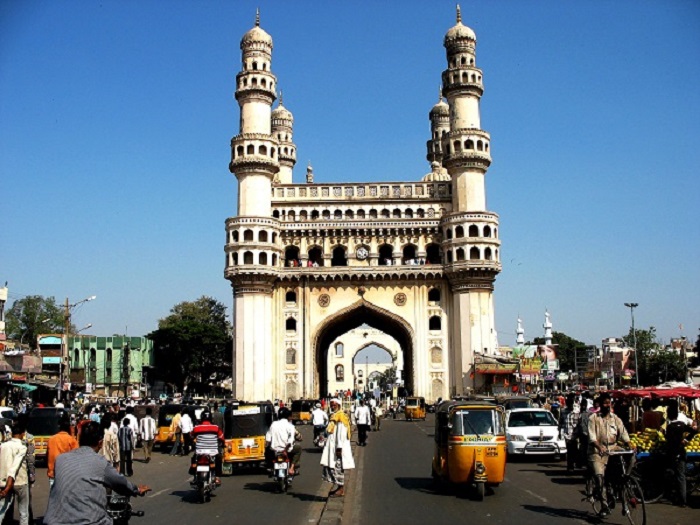
Image Source http://blogs.hungrybags.com/
5. Fatehpur Sikri, Agra
The Fatehpur Sikri still serves as a city, and was used as Akbar’s new capital, when he temporarily moved from Agra. This World Heritage Site integrates several Persian, Jain, and Hindu elements in its architecture.
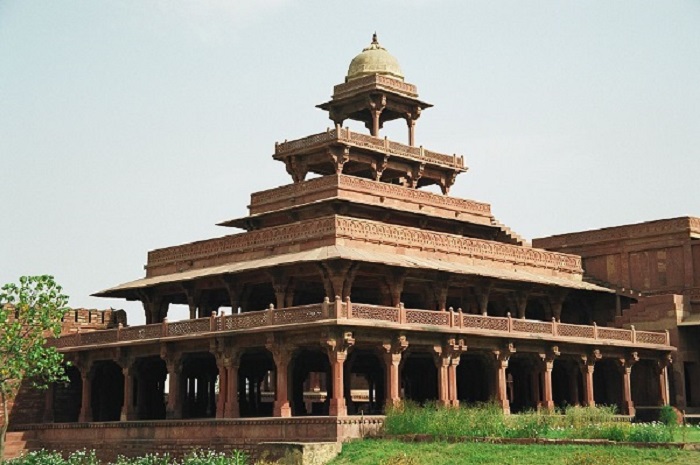
Image Source https://www.wikiwand.com/en/Fatehpur_Sikri
6. Gol Gumbaz, Bijapur
The Gol Gumbaz, translating into ‘round dome’ was built as a burial house for Bijapur ruler, Mohammed Adil Shah. It is a typical example of the architectural tactics employed by the Deccan Sultanate. The Gol Gumbaz is famous for its ‘Whispering Gallery,’ where the acoustics ensure that even a whisper can be heard at the other end of the monument.
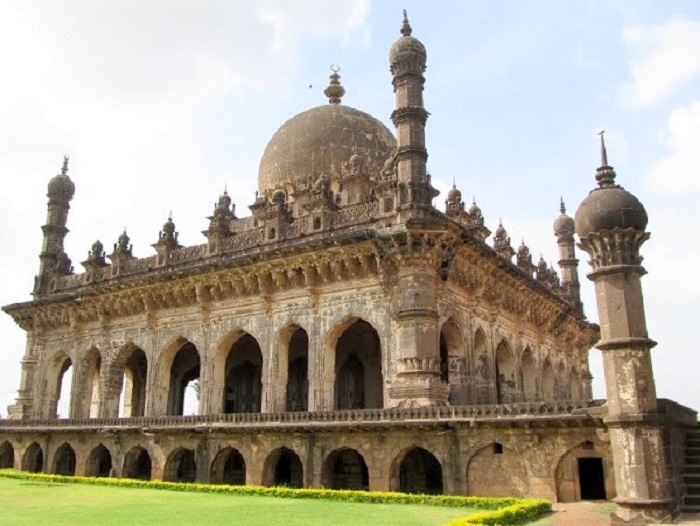
Image Source https://6thstation.wordpress.com/tag/gol-gumbaz/
7. Golconda Fort, Telangana
The Golconda Fort belonged to the Golconda Sultanate of the 16th century. This fort was originally constructed by the rulers of the Kakatiya dynasty. After changing hands several times, the fort was finally seized by Mughal emperor, Aurangzeb. This mining region is primarily famous for having given the world some of the best diamonds, including the Koh-i-Noor.
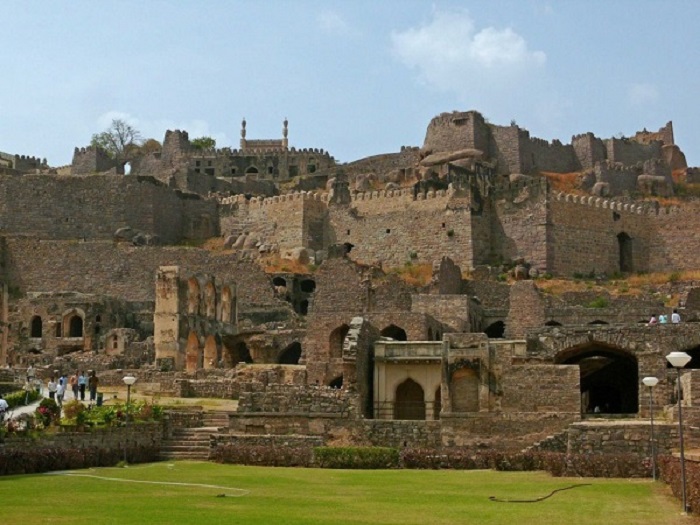
Image Source http://hyderabadadvisor.com/golconda-fort/
8. Hawa Mahal, Jaipur
Often referred to as the ‘Palace of Winds,’ the Hawa Mahal is located in Jaipur, Rajasthan, which is famous for housing numerous beautiful palaces. The palace is made up of sandstone, and it resembles a screened wall. The construction of the Hawa Mahal was commissioned by Maharaja Sawai Pratap Singh, to allow women of the royal household to look onto the streets, at the same time keeping them protected from public view.
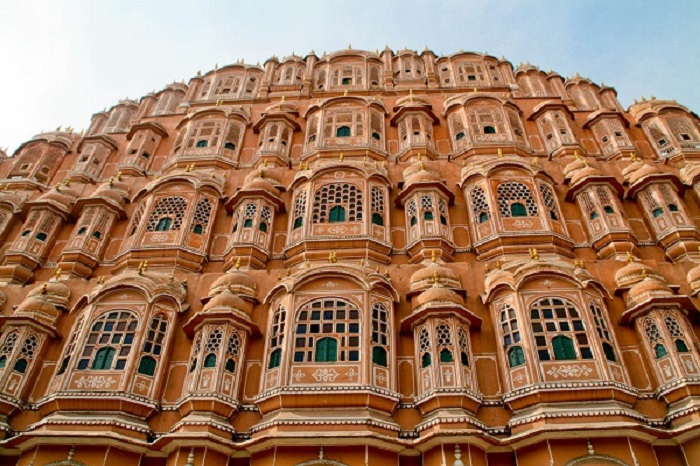
Image Source http://www.excitingindia.in/hawa-mahal-tourist-place-in-jaipur/
9. Bahai Temple, Delhi
Also called the ‘Lotus Temple’, this monument is famous for two main reasons—its architecture and its policy of religious tolerance. The temple is shaped like a flower, and it is open to anybody, irrespective of the religion they follow. The temple allows people to sit inside and follow their own faith, chant their religious prayers, without any restrictions.
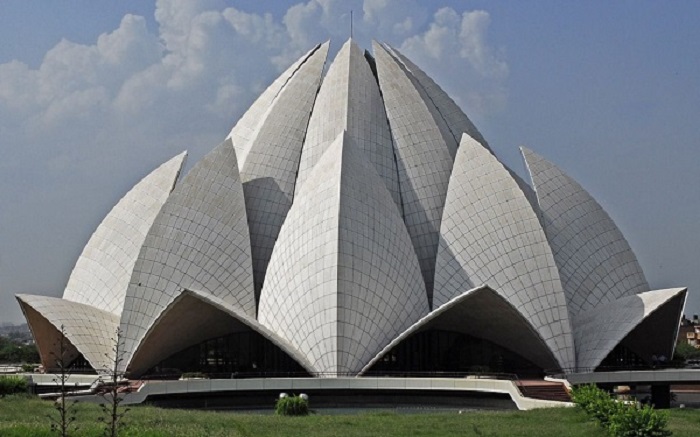
Image Source http://tripwow.tripadvisor.com/slideshow-photo/baha-i-temple-india-india.html?sid=14234192&fid=upload_12959261710-tpfil02aw-27124
10. Victoria Memorial, Kolkata
The Victoria Memorial was built in memory of Queen Victoria. The monument, in Kolkata, West Bengal, has a vast stretch of gardens, with a museum of British artifacts and paintings. Constructed by William Emerson, Victoria Memorial incorporates Mughal, Italian, and British architectural components. This building stands tall in all its grandeur with a figurine of the Angel of Victory on top of its main dome. This historical monument is popular with tourists, and is made up of the same Makrana marble used for the construction of the Taj Mahal.
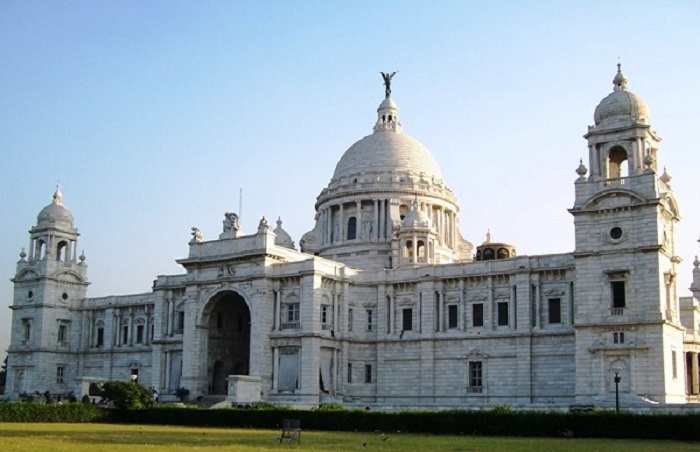
Image Source http://www.trekearth.com/gallery/Asia/India/East/West_Bengal/Kolkata_(Calcutta)/photo1412050.htm
11. Sanchi Stupa, Madhya Pradesh
The Great Stupa at Sanchi is another UNESCO World Heritage Site. It is a significant historical monument because it has been constructed where the relics of Gautama Buddha lies. Commissioned by Emperor Asoka, the monument was built under the supervision of his wife, Devi. The ‘chatra,’ on the basic structure, symbolizes high position. The stupa has changed hands several times, moving on from the Maurya Dynasty to the Sunga rulers to the Satavahana and the Gupta periods.
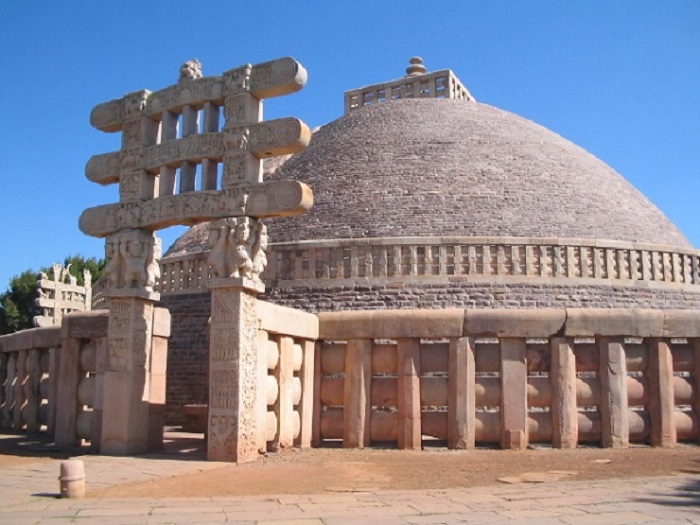
Image Source http://www.infobharti.com/indian-arts-and-culture/tag/sanchi-stupa
12. Qutub Minar, Delhi
The Qutub Minar located in Mehrauli, Delhi, is also a UNESCO World Heritage Site, and is 73-meters tall. This spectacular monument was initially funded by Qutub-ud-din Aibak, and was later competed under the orders of Shams-ud-din Iltutmish. After being destroyed by lightning, it was Feroz Shah Tughlaq who ordered the monument to be reconstructed. Made of red sandstone, the Minar contains verses from the Quran.
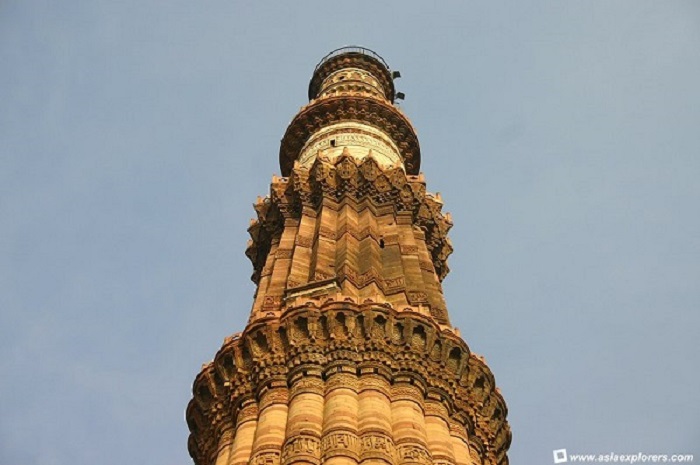
Image Source http://www.infobharti.com/indian-arts-and-culture/tag/sanchi-stupa
13. Red Fort, Delhi
Serving as home for the Mughal rulers, starting from Shah Jahan, the Red Fort, or ‘Lal Quila’ is another important monument commissioned by him. Apart from having Mughal design components, it also shows influences of Hindu and Persian architecture.
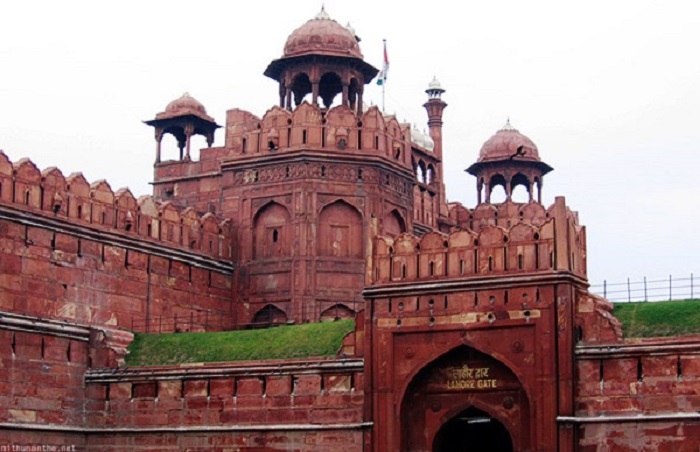
Image Source http://mithunonthe.net/2010/03/31/taj-mahal-agra-new-delhi-red-fort-raj-ghat-india-gate-rashtrapati-bhavan/#axzz3dDUVrumc
14. Khajuraho Temples, Madhya Pradesh
The Khajuraho Group of Monuments is located in Madhya Pradesh, and consists of Hindu as well as Jain temples. These World Heritage Sites are known for their use of erotic sculptures with elements of Nagara architecture. The reason why they are referred to as a group, though they are meant for followers of different faiths, is because these temples were built at the same time as a symbol of religious tolerance.
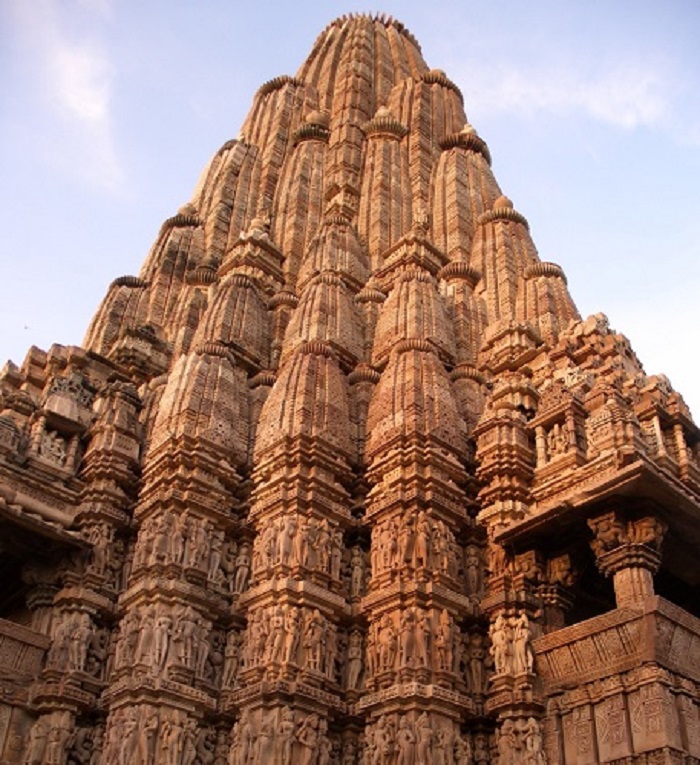
Image Source http://mymptrip.com/khjuraho.aspx
15. Ajanta and Ellora Caves, Maharashtra
Though differently built, these caves are usually mentioned together since they both are located in Aurangabad, and consist of rock-cut places of worship. While the Ajanta Caves consist solely of Buddhist temples, the Ellora Caves also contain Hindu and Jain structures. Both these World Heritage Sites were made by different dynasties over a vast period of time.
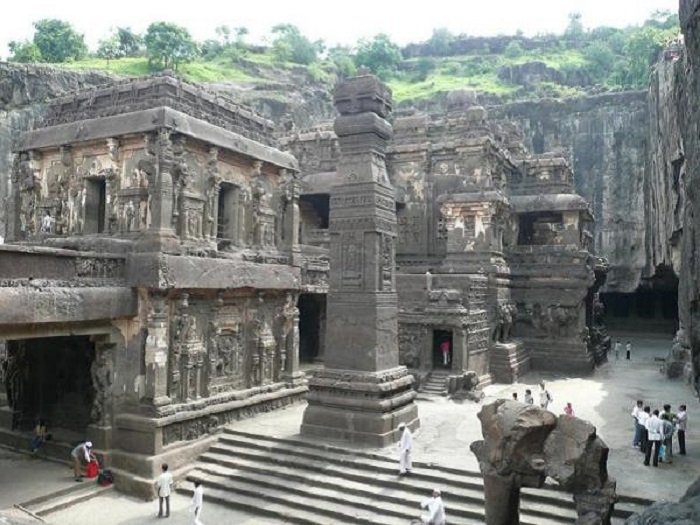
Image Source https://places4all.wordpress.com/2012/12/15/ajanta-ellora-caves/
16. Humayun’s Tomb, Delhi
This masoleum of the Mughal emperor, Humayun, was ordered to be built by his wife, Bega Begum, and is situated in Delhi. The Humayun Tomb is renowned as India’s first tomb having a garden, and the first ever to be made in red sandstone on an epic scale. This splendid structure has also been declared as a World Heritage Site.
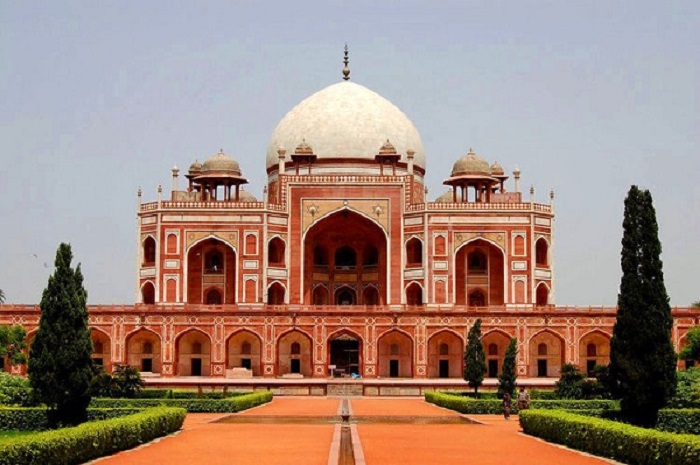
Image Source https://www.asi.irctc.co.in/home/humayuns_tomb
17. Golden Temple, Amritsar
The Harmandir Sahib, famously called the Golden temple is located in Amritsar. The temple is a gurdwara that is visited by thousands of Sikhs as well as people of other faiths, each and every day. The Sikh holy books, Adi Granth and Guru Granth Sahib have been placed inside the gurdwara by its founder, Guru Arjan. Although this being the holiest ground for Sikhs all over the globe, the reason for its fame is the existence of four doors to symbolize Sikh tolerance towards followers of all religions.
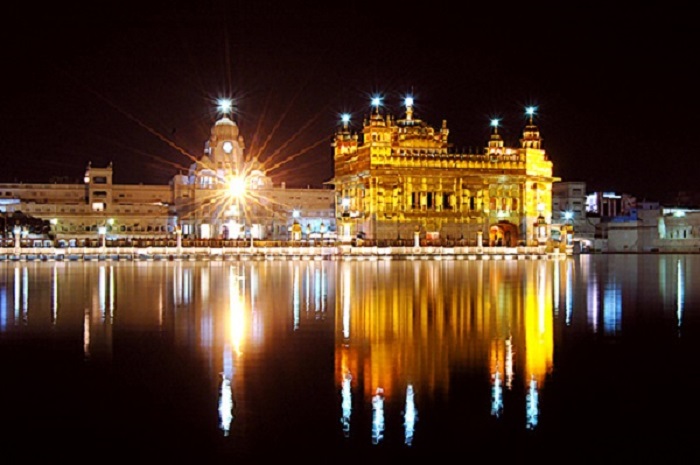
Image Source http://www.maadurgawallpaper.com/golden-temple-amritsar
18. Jama Masjid, Delhi
The Jama Masjid is famous for being the largest mosque in India, made in the mid-17th century by Mughal ruler, Shah Jahan. This large monument has a capacity of 25000 people. This red sandstone-marble monument has constantly been the site of political and religious strife, with two attacks on the mosque occurring in 2006 and 2010 causing severe communal riots.
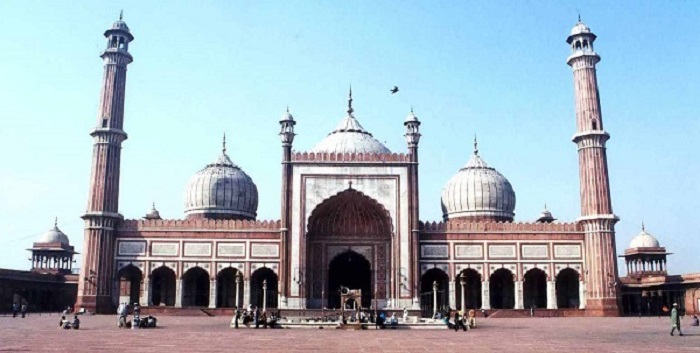
Image Source http://www.columbia.edu/itc/mealac/pritchett/00routesdata/1600_1699/shahjahanabad/jamamasjidphotosmod/jamamasjidphotosmod.html
19. Sacred Ensembles of the Hoysala, Belur and Halebid, Karnataka
Out of 1500 temples built by the rulers of the Hoysala dynasty, around 100 remain, and these are located in the towns of Halebid and Belur, in Karnataka. The architectural grandeur is particularly eye-catching at Belur’s Chennakeshava temple and Halebid’s Hoysaleshwara temple. What makes this group of temples more appealing is the equal importance given to Jainism, and the followers of both Lord Vishnu as well as Lord Shiva.
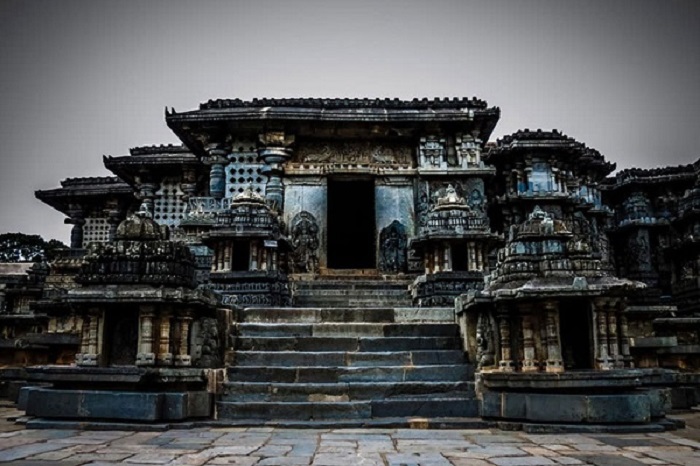
Image Source http://www.holidaymonk.com/blog/
20. Mahabodhi Temple, Bodh Gaya
Situated in Bodh Gaya, the Mahabodhi Temple is a sacred place for the Buddhists, since this was the place where Gautama Buddha is believed to have received enlightenment. Built approximately in 260 B.C by Asoka, this temple is made of bricks, and has still survived with the help of restoration. This too has been declared a UNESCO World Heritage Site. Presently, the Government of Thailand is funding the gold that is being used to coat the exteriors of the temple.
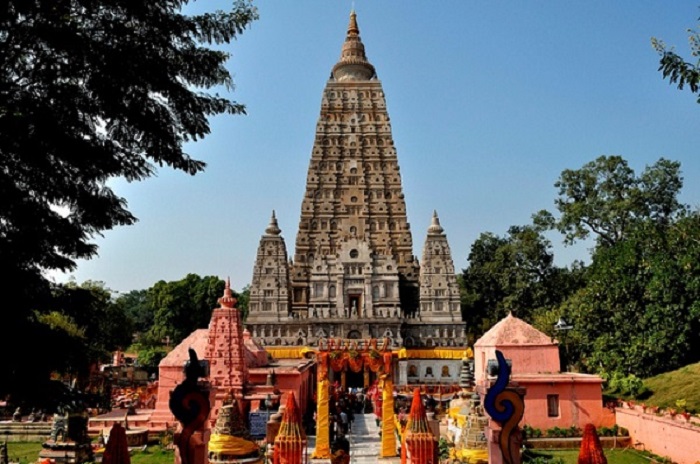
Image Source http://www.bhavyaholidays.com/blogs/mahabodhi-temple-complex-bodh-gaya/
21. Monuments in Hampi, Karnataka
The city of Vijaynagara in Karnataka houses a beautiful village named Hampi. However, Hampi is not just any other village; it is home to the magnificent ruins of temples that have collectively been declared a World Heritage Site by UNESCO. The most renowned place of worship is the Virupaksha temple. According to Google, it is also one of the most searched historical locations.
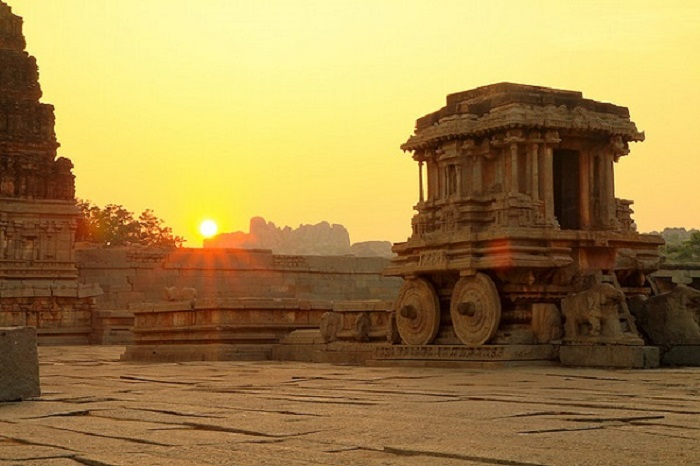
Image Source http://indiaincredible.theholidayindia.com/photogallery/world-heritage-sites-in-india-a-glimpse-of-the-bygone-era/
22. Mahabalipuram, Tamil Nadu
A historic town founded hundreds of years ago, Mahabalipuram is located in Tamil Nadu. This town is famous for its rock temples built by rulers of the Pallava dynasty. Dedicated to various gods, and displaying intricate sculpting skills, these temples are also on the list of World Heritage Sites.
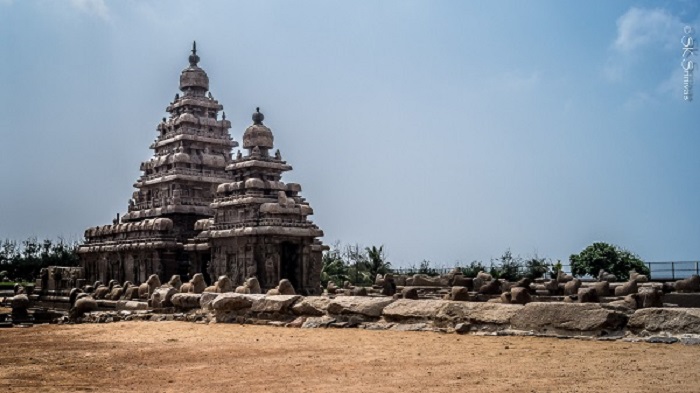
23. Sun Temple, Konark
Built in the 13th century by Narasimhadeva I, the Konark Sun Temple is located in Orissa. Also known as the Black Pagoda, the structure resembles a chariot on stone wheels, and is dedicated to Surya, the Sun God. It is a significant Kalinga monument that has not only been named a World Heritage Site by UNESCO, but has also made it to the list of Seven Wonders of India, compiled by NDTV and the Times of India.
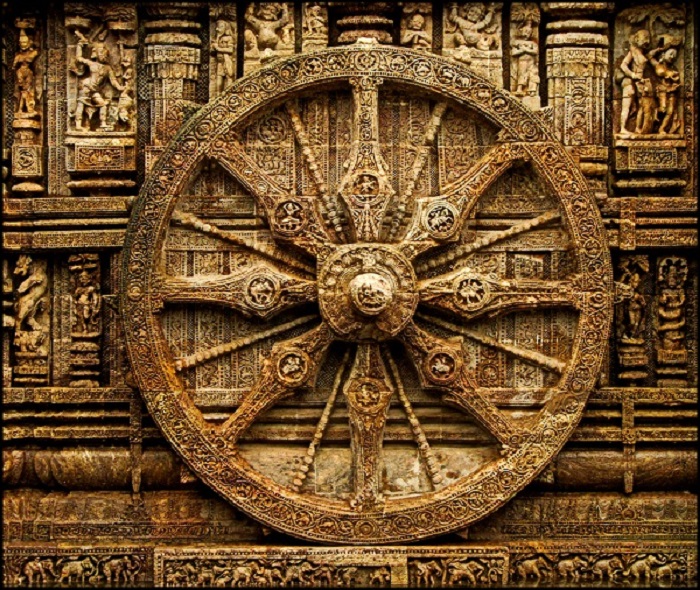
Image Source https://www.flickr.com/photos/manumint/4868741722
24. Jaisalmer Fort, Rajasthan
Constructed by Rajput king Rawal Jaisal, in 1156 AD, the Jaisalmer Fort is the largest such structure in the world. Situated on the Thar Desert in Rajasthan, this extraordinary structure is made of yellow sandstone. The ‘Golden Fort’ or ‘Sonar Quila,’ as it is often called, was named as a World Heritage Site in 2013.
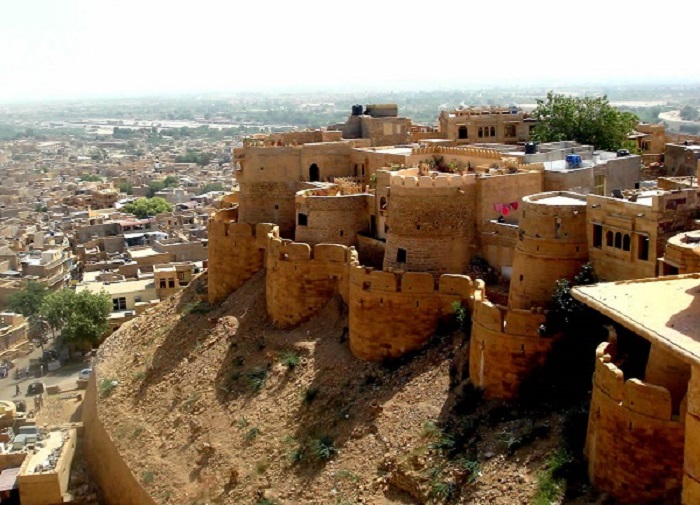
Image Source http://www.7wonders.org/asia/india/jaisalmer/jaisalmer-fort/
25. Temples of Bishnupur, West Bengal
These stunning terracotta temples are present at Bishnupur, in West Bengal’s Bankura district. These temples were built by the rulers of the Malla dynasty, around the 17th and 18th centuries. Some of the most arresting laterite holy places situated here, dedicated to Lord Vishnu are the Rasmancha, Jor-Bangla, Madanmohan and Radha Shyam temples.
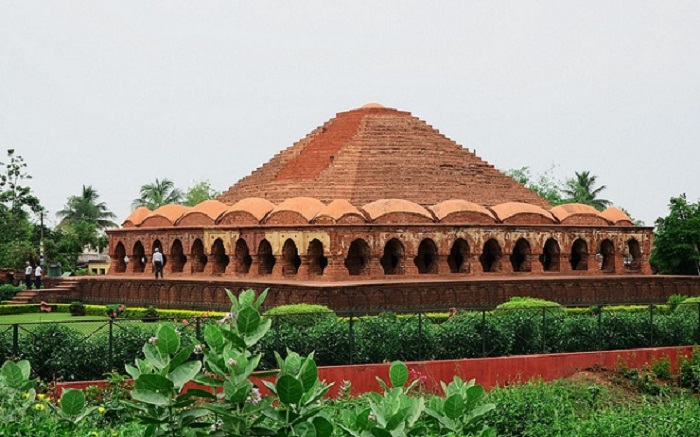
Image Source https://www.flickr.com/photos/rajeshwar/5671649057






